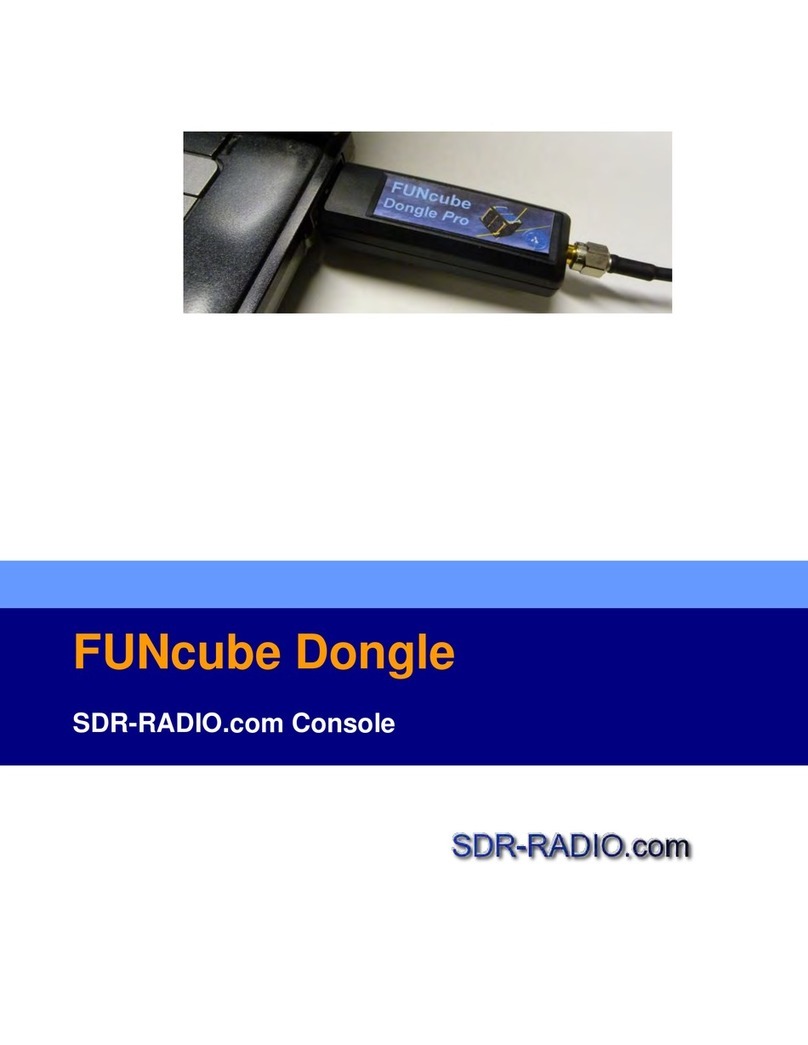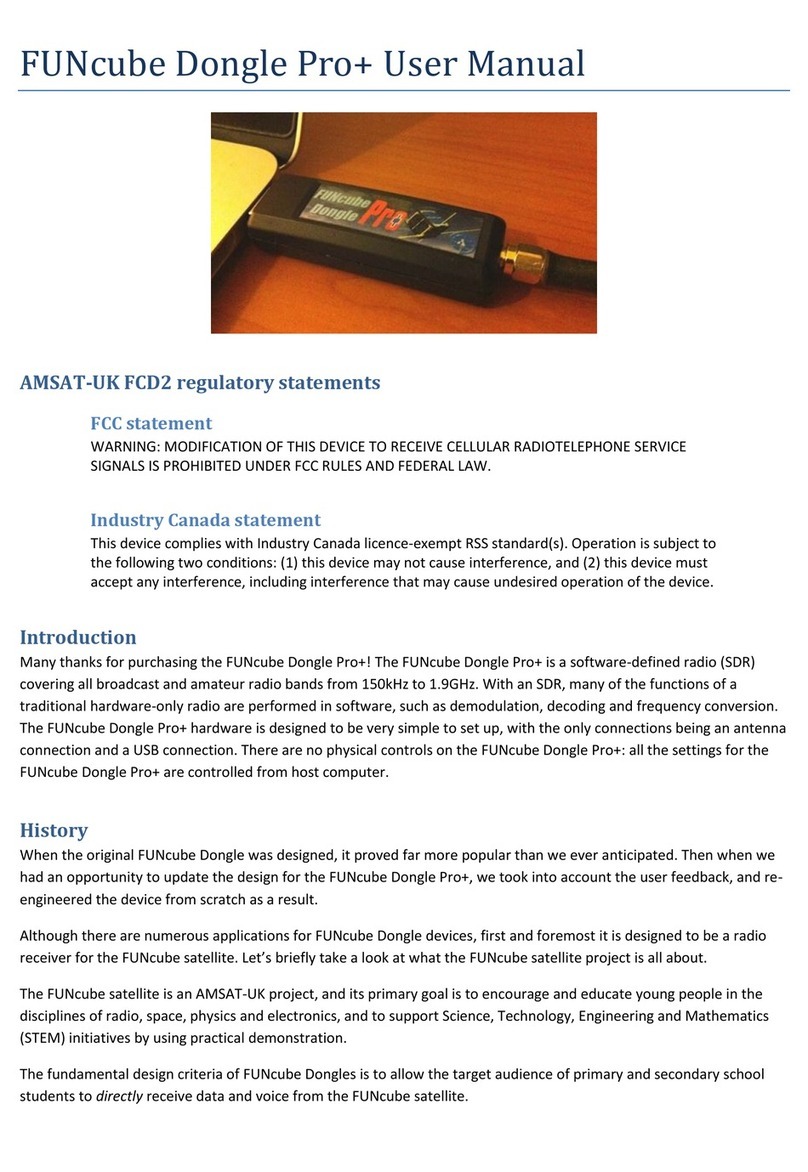
FUNcube Dongle
Pro
+ User Manual (V4)
AMSAT-UK
FCD2
reg
u
latory
statements
FCC
statement
WARNING: MODIFICATION
OF
THIS
DEVICE
TO
RECEIVE
CELLULAR
RADIOTELEPHONE
SERVICE
SIGNALS
IS
PROHIBITED
UNDER
FCC
RULES
AND
FEDERAL
LAW.
Industry
Canada
statement
This device complies
with
Industry Canada licence-exempt
RSS
standard(s). Operation
is
subject
to
the
following
two
conditions: (1) this device may
not
cause interference, and (2) this device
must
accept
any interference, including interference
that
may cause undesired
operation
of
the
devi
ce.
Intr
oduct
i
on
Many
thanks
for
purchasing
the
FUNcube Dongle Pro+! The FUNcube Dongle Pro+
is
a
software-defined
radio
(SDR)
covering all broadcast and
amateur
radio bands
from
150kHz
to
1.9GHz.
With
an
SDR,
many
of
the
functions
of
a
traditional
hardware-only
radio are
performed
in software, such
as
demodulation, decoding and
frequency
conversion.
The FUNcube Dongle Pro+ hardware isdesigned
to
be
very simple
to
set up,
with
the
only connections being
an
antenna
connection and a
USB
connection. There are no physical controls on
the
FUNcube Dongle Pro+ itself: all
the
settings
for
the
FUNcube Dongle Pro+ are controlled
from
host computer.
History
When
the
original FUNcube Dongle was designed;
it
proved far
more
popular than
we
ever
anticipated. Then
when
we
had an
opportunity
to
update
the
design
for
the
FUNcube Dongle Pro+, we
took
into
account
the
user feedback, and re-
engineered
the
device
from
scratch
as
a result.
Although
there
are
numerous
applications
for
FUNcube Dongle devices, first and
foremost
it
is
designed
to
be
a radio
receiver
for
the
FUNcube satellite. Let's briefly take a
look
at
what
the
FUNcube satellite
project
is
all about.
The FUNcube satellite
is
an AMSAT-UK project, and its
primary
goal is
to
encourage and educate young people in
the
disciplines
of
radio, space, physics and electronics, and
to
support
Science, Technology, Engineering and Mathematics
(STEM)
initiatives by using practical demonstration.
The fundamental design criteria
of
FUNcube Dongles
is
to
allow
the
target
audience
of
primary
and secondary school
students
to
directly receive data and voice
from
the
FUNcube satellite.
























